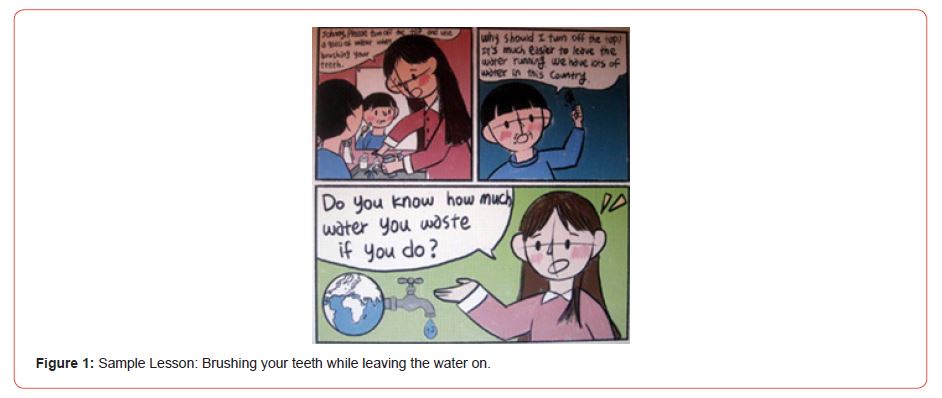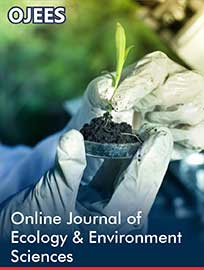 Research Article
Research Article
Children’s Book on Climate Change and Math
Yee Han Peter Joong*
The University of the West Indies at Mona, Kingston, Mona, Jamaica
Yee Han Peter Joong, The University of the West Indies at Mona, Kingston, Mona, Jamaica.
Received Date: October 03,2022; Published Date: February 23, 2023
Introduction
The Earth is definitely getting warmer. How does it affect us? What can we do? Mathematics is the language of science. The science of climate change can be expressed, predicted and studied with the help of mathematics. Students will learn mathematical skills and climate change with the use of this book. The book is intended for students in senior primary and intermediate secondary grades. It can also be used by parents and educators. It is designed to assist children with the development of skills in integrated mathematics and eco-awareness. The aim is to help children to develop awareness and knowledge about our planet and its precious resources. Importantlyantly, children will learn how human actions affect climate change and what they can do to save our environment. At the same time, they will apply their knowledge by solving related mathematical and real-life problems. The contexts, narratives and illustrations in each lesson are aimed to engage children.
Climate Change and Math
Topics are introduced through mathematics, statistics and web exploration. Children will explore the topics and websites with data to see the causes, effects and actions related to global warming, greenhouse gases, climate change and Carbon Footprints. Using image analysis, children’s stories, data, charts, activities, reflections and discussion, children can unpack challenges related to the climate change problems in the world. They can talk about what’s being done and what can be done to make a difference, particularly by children. Children often ask why they have to study mathematics. This approach will provide insight into how we can apply mathematics to study key issues related to climate change. The book contains a set of organized participatory lessons in which children and adults (teachers and/or parents) can use their collective imaginations, creativity and problem-solving skills to solve mathematics and socio-environmental problems. Hopefully children can arrive at ideas for action. They can make a difference. They can make changes. It’s our world.
Topics in the Book
Topics in the twenty-five lessons are:
Population Growth and Effects
Human Consumption of Food, Water, and Energy
Climate Change and Greenhouse Gas Emissions
Global Warming – Causes, Effects and Actions
Natural Disasters caused by Climate Change
Deforestation and the Amazon Rainforest
Garbage and Waste
Air, Ocean and Plastic Pollution
Dirty Fashion, Microplastics, and Plastic Waste
Earth Overshoot Day and Reduction of Carbon Footprints
What we can do to reduce our Carbon Footprint
Solutions: Conservation and the 3 R’s
The 3 R’s - Reduce, Reuse and Recycle.
Youth Activism for Climate Change (Figure 1)

Let’s do an experiment
Ask two students to go to the washroom and use a container to collect running water when one is brushing his/her teeth.
Use a measuring cylinder to measure how much water is wasted.
Calculation
Assume that the volume of water wasted is 4 L.
Calculate amount of water wasted for a class of 30 students:
4L x 30 x 2 = 240 L/day assuming each student brushes twice per day.
Discussion
1. What did you learn from the experiment?
2. Write down five ways you can stop wasting water at home at school?
Research Evidence
The authors conducted numerous quasi-experimental mixed method studies on this topic in Jamaica, Guyana, Canada, China, and Taiwan. The studies aimed to: 1) investigate the curriculum and teaching strategies that can be used to integrate climate change in the primary/secondary mathematics classroom; 2) examine the effect of integrating climate change in students’ achievement in mathematics, and their environmental knowledge, attitudes, and behavior. Research methodology involves a pre-test, interventions/ experiment in the form of eight 60-minutes lessons taken from the content of this book, and a post-test. Interventions are similar to those in the literature review [1] involving real-world local problems and mathematics. The interventions/lessons provide opportunities for students to explore three key dimensions of environment education [2].
1. Education in the environment, such as when students calculate the amount of water commonly used by households and then the savings made by fixing a dripping tap or showering rather than bathing.
2. Education about the environment can be pursued through a range of learning experiences, such as a study of pie charts or comparison bar graphs showing sources of air or water pollution locally or comparison of household monthly water usage.
3. Education for the environment will occur when students act on their learning in ways that maintain and improve the quality of the environment. Students will use their mathematical skills to advance environmental causes such as reducing water and electricity usage. At the same time students will build their competencies and improve their performance in mathematics.
Result and Substantiated Conclusions
Data collected from the pilot study involving sample classes in Jamaica were collected and analyzed. Answers to research questions are:
Question 1: Sample teachers used the fractions, percent, bar graphs and pie charts, to generate climate change discussions. Sample teachers and students found the curriculum materials in the intervention (Table 1) interesting and useful.
Question 2: In one class, the mean of Mathematics content pretest was 46.30 (SD = 10.8) and the post test was 62.73 (SD = 12.8). The mean difference was 16.43 which is significant (t = 8.7, p =.000, df = 43). Results indicate that integration of climate change helped to enhance students’ performance in mathematics. With regards to the effect of integrating climate change with students’ environmental knowledge, behavior and activism, pre- and posttest were given to both sample classes. Sample results are listed in the table below (Table 1).
Table 1:

Conclusion and Recommendations
Results of this study in various countries clearly demonstrated that the integration project provided opportunities for students to explore three key dimensions of climate change, i.e. education in, about and for the environment [2]. Strategies used include solving local problems (Altman & Munroe. 2001) and environmentally responsible behavior such as energy and water conservation, reduction of Carbon Footprints, the 3Rs, etc. (Rickinson, 2002) At the same time, sample students built their competencies and improved their performance in mathematics, in particular, fractions, percent and statistical graphs.
Acknowledgement
None.
Conflict of Interest
No conflict of interest.
References
-
Yee Han Peter Joong*. Children’s Book on Climate Change and Math. Online J Ecol Environ Sci. 1(1): 2023. OJEES.MS.ID.000502.
-
Too much environmental information, Decontextualized management, Indigenous, Local knowledge, Holistic stories, Wisdom deprivation, Indigenous steam
-

This work is licensed under a Creative Commons Attribution-NonCommercial 4.0 International License.






